Hampstead Garden Suburb allotments – a history
The seeds are sown
Gardening … the purest, deepest and most recreational of pleasures …. gardeners being the most delightful of people – Henrietta Barnett.
AS is well documented, Henrietta Barnett was inspired, or “driven” being a better word, to creating Hampstead Garden Suburb by her experience, over three decades, of living among and caring for the poverty-afflicted people of the East End of London. Determined, energetic and, to some who dealt with her, somewhat domineering, she sought to establish a residential settlement, a housing estate, where people of all classes, of different occupations in life and of varying wealth could live harmoniously sharing the benefits of a wholesome lifestyle without the deleterious deprivations she had witnessed as a vicar’s wife in Whitechapel at the end of the 19th century.
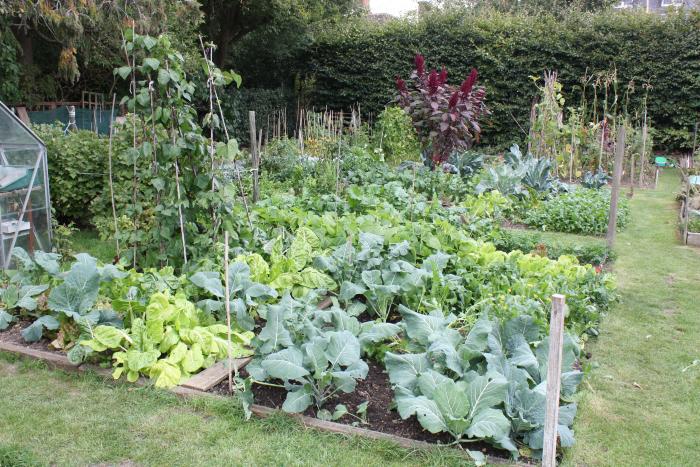 Indications of how she would justify her approach, how she would reason her philosophy were given on many occasions, in writings, in lectures, in conversations. On one occasion, when the Hampstead Garden Suburb estate had been established some years she found herself defending what was being described as the “crankish and freakish” appearance of Suburb people. Much was written in newspapers in the early years of sightseers being drawn to the estate by men with flowing hair and full beards, wearing sandals and long cloaks and girls with braided hair hanging over homespun smocks. And to prompt further curiosity the place appeared to be populated by vegetarians, suffragettes, rationalists and theosophists and all manner of non-conventional types. Henrietta Barnett’s response was to say: “We are just ordinary everyday men and women. We all work, wash and garden.”
Indications of how she would justify her approach, how she would reason her philosophy were given on many occasions, in writings, in lectures, in conversations. On one occasion, when the Hampstead Garden Suburb estate had been established some years she found herself defending what was being described as the “crankish and freakish” appearance of Suburb people. Much was written in newspapers in the early years of sightseers being drawn to the estate by men with flowing hair and full beards, wearing sandals and long cloaks and girls with braided hair hanging over homespun smocks. And to prompt further curiosity the place appeared to be populated by vegetarians, suffragettes, rationalists and theosophists and all manner of non-conventional types. Henrietta Barnett’s response was to say: “We are just ordinary everyday men and women. We all work, wash and garden.”
And there it is … the garden. A perfectly normal place for every normal person in which to be active, said the Suburb’s founder. Especially for those vegetarians, one assumes. A place where every resident, at whatever social level they were deemed to be, would find healthy contentment. Men, instead of squandering time and money in a public house, would devote themselves to the land, to growing, and thereby to create friendships between the social classes and to encourage the responsibilities of being husband and father.
Her eagerness to link the pursuit of a healthy and wholesome lifestyle with working the land was also apparent after a visit to America in the 1920s when, on returning, she wrote approvingly of a list of ways by which women who were described as “fallen” were treated when they appeared in court. The “character-building influence of dealing with the land,” was one of them. These miscreants were ordered to find redemption by being sent to the fields.
This Utopian idealism would be transmitted to a man who would be crucial in the execution of her ideas, a man who would be committed to her “green-golden scheme”: To Raymond Unwin, the architect she chose to draw up the plans for the projected 240-acre Hampstead Garden Suburb estate.
Raymond Unwin was 39 years of age when he was officially appointed by the Garden Suburb Trust as architect and surveyor for the new project. He was well suited to the post having already worked on model village projects elsewhere (at Letchworth and New Earswick near York) and, during their walks over what was then farmland, he listened to and shared Henrietta’s ambitions.
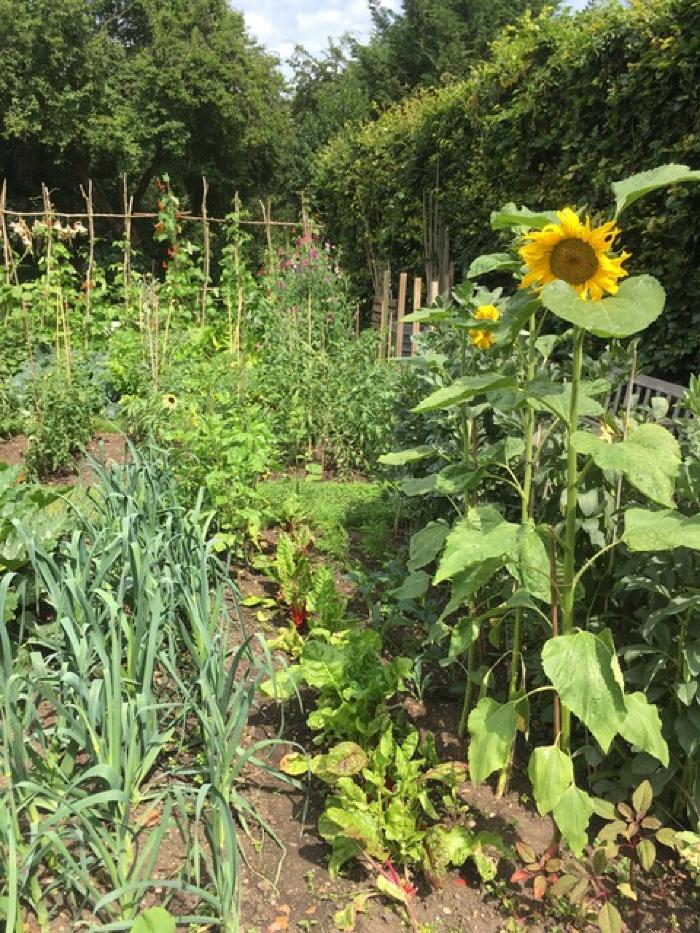 Although there were differences later on how much money should be spent, the two viewed the philosophical approach through the same eyes: education facilities, recreation areas and homes with gardens. Instead of closely-built gardenless “boxes” in which Eastenders struggled to live there were to be no more than eight houses per acre. This would allow plenty of space for gardens and behind the homes “additional gardens” as the architects termed them. She told Unwin that she wanted these “backlands” to offer the residents of her garden estate a place for communal use, for social mixing, a recreational focus for a communally-minded society. Unwin would have taken little persuading. And thus, the seeds were sown. The word “garden” encompassed a place to grow vegetables. The allotments were born.
Although there were differences later on how much money should be spent, the two viewed the philosophical approach through the same eyes: education facilities, recreation areas and homes with gardens. Instead of closely-built gardenless “boxes” in which Eastenders struggled to live there were to be no more than eight houses per acre. This would allow plenty of space for gardens and behind the homes “additional gardens” as the architects termed them. She told Unwin that she wanted these “backlands” to offer the residents of her garden estate a place for communal use, for social mixing, a recreational focus for a communally-minded society. Unwin would have taken little persuading. And thus, the seeds were sown. The word “garden” encompassed a place to grow vegetables. The allotments were born.
In full bloom
“FATHER working, mother watching, children helping, the land yielding …” Henrietta Barnett mused as she contemplated the lay-out of her treasured suburb estate and the part to be played in it by gardens and allotments. “The family will be able to take its pleasures together – the pleasure of tending the kindly fruits of the earth”. Digging an allotment made men more friendly, she said. And in support of her enthusiasm the newly-created Trust agreed to open a shop selling plants, tools and gardeners’ aids. And it offered the labour from those gardeners it was then employing to the residents.
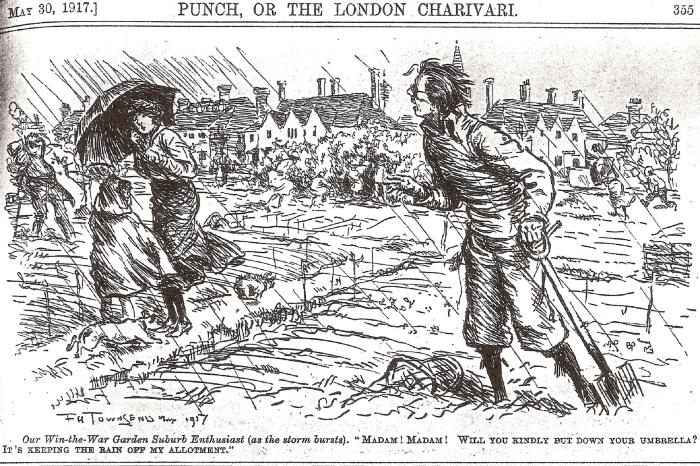 At first the “backland” areas in the plans drawn up by Unwin were designated as tennis courts for the more wealthy occupants of the new homes. Behind the roads assigned for artisan occupation, at the northern side of the Suburb plan, there would be allotments, for families to grow vegetables and fruit. But the Second World War per force created a necessity for a different approach. Dig for Britain, the campaign to encourage the wartime populace to become more self-sufficient, resulted in the conversation of many of the tennis courts into the allotments in use today. The shed in the corner of the Temple Fortune Hill allotments still has its original gas pipes supplying tennis players with the means to brew tea, and during the restoration of the Chatham Close allotment site a rotavator frequently threw up the clinker chunks which was used to firm the base of tennis courts and at one corner the eroded remains of a metal angle post for the enclosure netting, was struck by the machine’s blades.
At first the “backland” areas in the plans drawn up by Unwin were designated as tennis courts for the more wealthy occupants of the new homes. Behind the roads assigned for artisan occupation, at the northern side of the Suburb plan, there would be allotments, for families to grow vegetables and fruit. But the Second World War per force created a necessity for a different approach. Dig for Britain, the campaign to encourage the wartime populace to become more self-sufficient, resulted in the conversation of many of the tennis courts into the allotments in use today. The shed in the corner of the Temple Fortune Hill allotments still has its original gas pipes supplying tennis players with the means to brew tea, and during the restoration of the Chatham Close allotment site a rotavator frequently threw up the clinker chunks which was used to firm the base of tennis courts and at one corner the eroded remains of a metal angle post for the enclosure netting, was struck by the machine’s blades.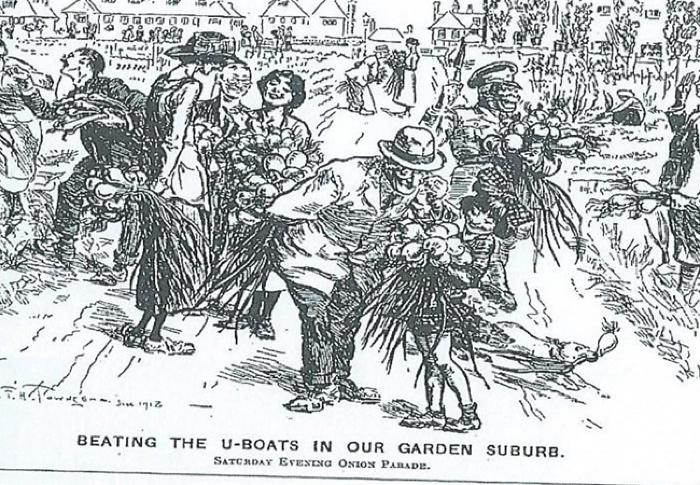
And so now, more than a century later, there are 12 allotment sites, worked not so much, in Henrietta’s eyes, as a palliative to social division or as a distraction from time and money squandered in a public house; not so much as a social sine qua non but as a hobby, embodying, perhaps, an age-old instinct to satisfy an inner urge to grow one’s own food; not so much in these modern, more egalitarian times as an artifice to effect the mixing of the classes; not so much to be seen as a retreat from deprivation but as a retreat from the demands of a metropolitan working week. And no longer can “watching” be ascribed to a woman, as Henrietta had envisaged, when modern “man” driving his fork into the earth would just as likely be a woman.
The mixing of classes, working, middle and upper as perceived, was a cardinal principle in the Suburb’s development and in the minds of its developers. But as metropolitan society has evolved the mixing of classes has become a redundant motivation giving way to a different form of integration …. the integration of residents who belong to a wide range of national origins. The Suburb’s allotments, if the point needs any emphasis in a multi-ethnic society, could be seen as a symbol of racial integration. In a survey of some of the allotment sites, more than half the tenants and their spouses were either naturalised British or were living in the Suburb as a result of occupational relocation.
Times, they have a-changed. Yet what was true in the early 1900s is still true today: “When the world wearies and society fails to satisfy there is always the garden,” as one of those observations on gardening goes. A place to find oneself when one loses oneself.
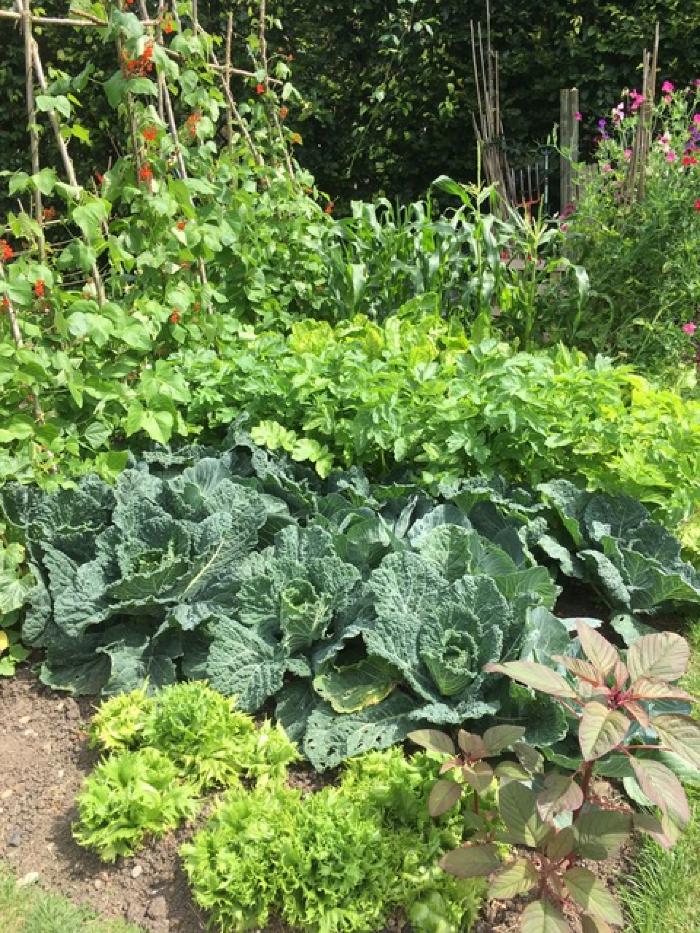 The Hampstead Garden Suburb Trust, born as the Garden Suburb Trust in 1904 to secure the development area, is the landowner. Its function is to ensure these “backlands” are protected and maintained as allotments and to receive the rents paid by the individual plotholders. It is supported in this role by the Allotments Committee, a body comprising representatives of the sites, ex-officio members of the Trust and various co-opted members with a horticultural interest. Acting like a “parliament”, the committee hears reports from the site representatives, known as site secretaries, makes recommendations on the issues raised and on rent levels. It makes regular inspections of the 12 locations, names the Best Allotment and organises an annual harvest supper.
The Hampstead Garden Suburb Trust, born as the Garden Suburb Trust in 1904 to secure the development area, is the landowner. Its function is to ensure these “backlands” are protected and maintained as allotments and to receive the rents paid by the individual plotholders. It is supported in this role by the Allotments Committee, a body comprising representatives of the sites, ex-officio members of the Trust and various co-opted members with a horticultural interest. Acting like a “parliament”, the committee hears reports from the site representatives, known as site secretaries, makes recommendations on the issues raised and on rent levels. It makes regular inspections of the 12 locations, names the Best Allotment and organises an annual harvest supper.
Three of the allotment sites are managed under the auspices of independent organisations. They are the Fellowship allotments which are the responsibility of the Hampstead Garden Suburb Fellowship, a charity, and the Orchard’s two sites, named South and North, which are governed by the Orchard Housing Society.
Virtue versus vulgarity
A DECADE before the first stones were laid in the building of Hampstead Garden Suburb, Henrietta Barnett visited the Bournville model village in Birmingham. Here she was shown the cottages built for the workers at the Cadbury brothers’ chocolate factory and came away impressed by the part played in the project by open spaces, and therefore the potential for gardening.
She said: Here the garden would offer families to grow their own food, fruit and vegetables as well as flowers and would offer a sober peaceful environment to the consideration of others.
The Bournville village was the mother of Hampstead Garden Suburb, she said. The visit would reinforce her reactions to the cramped box-like living conditions of Whitechapel and would be fundamental in her approach when dealing later with those she wished to attract to, and invest in, her project. The regenerative properties of gardening would answer people’s needs for recreation and recuperation. Better than the vulgar stupidities of working class recreation, she asserted.
Working with architects, investors, and eventually with members of the newly-founded suburb Trust, which shared her ideals, she made frequent references in writings and speeches to what she regarded as the importance of open spaces. The following statements are among many she made during those early days:
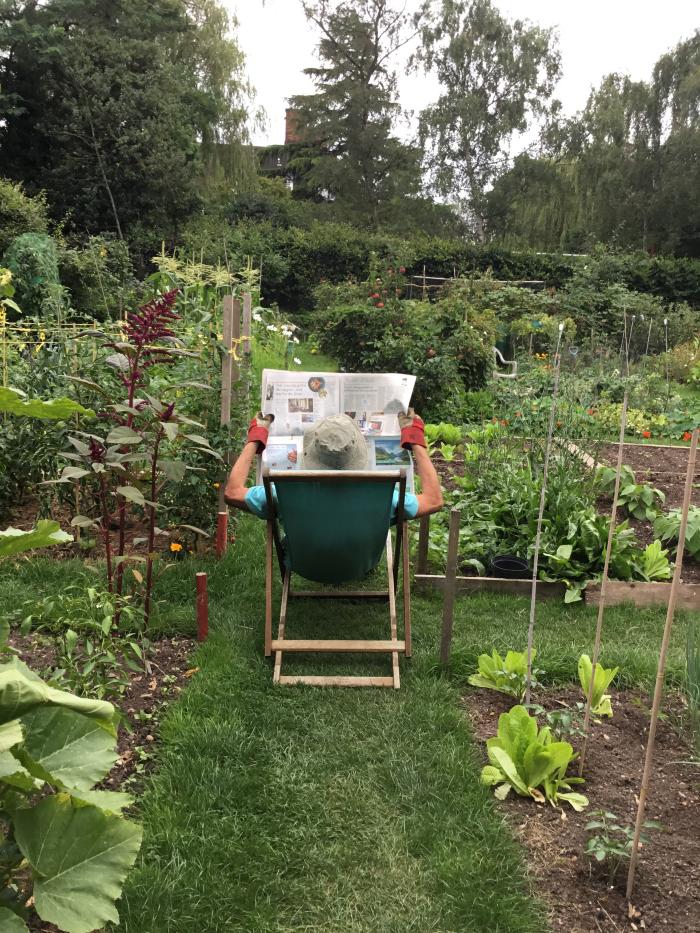 With open spaces …. with gardens where the family labour would produce vegetables, fruit and flowers , the people would develop a sense of home life and an interest in nature which forms the best security against the temptations of drink and gambling
With open spaces …. with gardens where the family labour would produce vegetables, fruit and flowers , the people would develop a sense of home life and an interest in nature which forms the best security against the temptations of drink and gambling
The cultivation of the garden gives the purest, deepest and most creative of pleasures through which all may be able to feel in themselves the joy of being creators.
The pleasures and purposeful outcomes of gardening would generate a bond between the residents and their community.
Following the foundation of the Horticultural Society, the first such organisation to be established in the new suburb, a local magazine reported:
The chief aim of the society is to indicate a pride in the cultivation of plants, trees and flowers, both beautiful and useful, and by inciting its members to a spirit of friendly rivalry to raise the standards of horticulture to a higher point as can be attained in suburban gardens.
Not everyone involved, though, fell into Henrietta Barnett’s idealistic way of looking at things. Edwin Lutyens who had planned the central square area said at one point:
(She is) a nice woman … but proud of being a philistine who had no idea beyond a window box full of geraniums, calceolarias and lobelias over which you can see a goose on a green.
There were also critics among journalistic and horticultural commentators, one periodical describing suburban gardens as: Repositories of pathetic primeval desires. Another critic suggested that Henrietta Barnett had been “seduced b y the shallow pleasures of instant gardening” and that her enthusiasm amounted to little more than a “self-indulgent affection for the superficially picturesque”
Whatever carping there was, and some of it may have been reaction to Henrietta Barnett’s forthright way of dealing with people, her ideal of having productive and pleasurable places to raise plants was realised. Today, those places thrive, a dozen or so private gardens and an allotment site having been opened biennially to the public as part of the National Gardens Scheme and the “backlands” are now popular retreats where all can share in what Henrietta Barnett described as the joy of being creators.
The constituent parts
(As of 2020. These area measurements are not precise, bearing in mind irregular site boundaries and contortive plots and pathways)
Asmuns Place (entrance from Asmuns Place):
Total area of site: 1,070m2
Area under cultivation: 656m2 (61%)
Plotholdings: 32
Chatham Close (entrances from Chatham Close, Big Wood):
Area: 777m2
Cultivated: 339m2 (44%)
Plotholdings: 10
Creswick West (entrance from Creswick Walk):
Area: 1,122m2
Cultivated: 467m2 (42%)
Plotholdings: 7
Creswick East (entrance from Creswick Walk):
Area: 468m2
Cultivated: 234m2 (50%)
Plotholdings: 4
Hilltop (entrance from Midholm and Eastholm):
Area: 464m2
Cultivated: 134m2 (29%)
Plotholdings: 7
Fellowship (entrance from Willifield Way):
Area: 500m2
Cultivated: 300m2 (60%)
Plotholdings: 4
The Orchard (North) (entrances from The Orchard, Asmuns Hill):
Area: 770m2
Cultivated: 440m2 (57%)
Plotholdings: 9
The Orchard (South) (entrance from The Orchard):
Area: 1,075m2
Cultivated: 483m2 (45%) (approx 50 raised beds)
Plotholdings: 13
Temple Fortune Hill (entrance from Willifield Way):
Area: 1,054m2
Cultivated: 687m2 (65%)
Plotholdings: 16
Woodside (entrance from Woodside):
Area: 550m2
Cultivated: 296m2 (54%)
Plotholdings: 3
Wordsworth/Willifield (entrance from Willifield Way, Wordsworth Walk):
Area: 1,255m2
Cultivated: 624m2 (50%)
Plotholdings: 14
ENDS (PETER HODGSON)